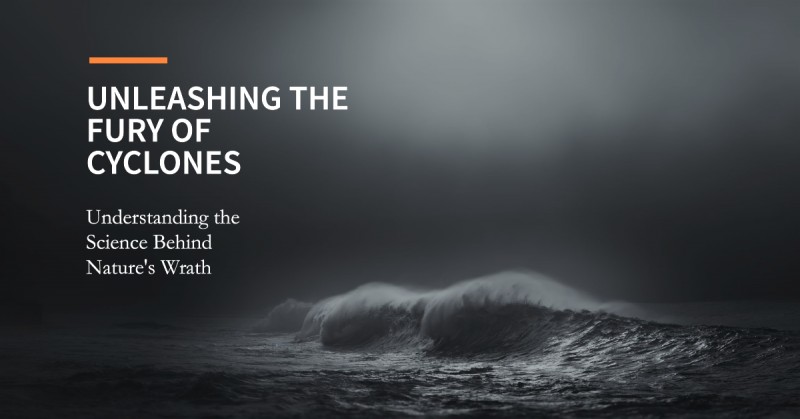
Introduction
Cyclones, also known as hurricanes or typhoons depending on the region, are awe-inspiring natural phenomena that can wreak havoc on coastal areas. These powerful storms are formed by a complex interplay of atmospheric conditions and are capable of causing extensive damage to both human infrastructure and the environment. In this article, we will delve into the mechanics of cyclone formation, understand the factors that contribute to their intensity, and explore the devastating impact they can have on affected regions.
Understanding Cyclones
What is a Cyclone?
A cyclone is a large-scale, low-pressure weather system that forms over warm ocean waters. It is characterized by rotating winds and intense thunderstorms. These storms derive their energy from the heat and moisture present in the tropical oceans, making them most prevalent in equatorial regions.
The Birth of a Cyclone
Cyclones typically originate from tropical disturbances, which are regions of unsettled weather characterized by thunderstorms and cloud formations. When favorable conditions are present, these disturbances can evolve into tropical depressions, the first stage of cyclone formation.
As the tropical depression intensifies, it absorbs heat and moisture from the ocean, fueling its growth. The warm air rises rapidly, creating a column of low pressure at the center of the depression. This low-pressure area attracts surrounding air, which starts rotating due to the Earth's rotation (the Coriolis effect). This rotating system forms the core of the developing cyclone.
The Anatomy of a Cyclone
A mature cyclone consists of several distinct parts. At the center lies the eye, a relatively calm and clear region characterized by sinking air and light winds. Surrounding the eye is the eyewall, a band of intense thunderstorms with the strongest winds and heaviest rainfall. The spiral rainbands extend outward from the eyewall, carrying additional moisture and contributing to the storm's overall size and intensity.
Factors Influencing Cyclone Intensity
Numerous factors can influence the intensity of a cyclone. The primary drivers are warm ocean waters and low vertical wind shear. Warm waters act as a source of energy, providing the heat and moisture necessary for cyclone formation and maintenance. Low vertical wind shear allows the cyclone's core to remain intact and vertically stacked, facilitating its strengthening.
Additionally, atmospheric stability, upper-level divergence, and the presence of an organized atmospheric disturbance can contribute to cyclone intensification. However, the exact interplay of these factors is still an active area of research, and forecasting the intensity of cyclones remains a challenging task.
The Impact of Cyclones
Devastation in Coastal Areas
When a cyclone makes landfall, it can bring widespread destruction to coastal areas. The combination of powerful winds, torrential rainfall, and storm surges can lead to flooding, infrastructure damage, and loss of life. The intensity and extent of the damage depend on various factors, including the cyclone's strength, size, and the preparedness of the affected region.
Humanitarian Crisis and Environmental Impact
Cyclones can result in significant humanitarian crises, with the displacement of populations, disrupted infrastructure, and compromised access to basic necessities. The aftermath of these storms often requires extensive relief efforts and long-term recovery plans.
Moreover, cyclones can have a profound impact on the environment. Coastal ecosystems, including coral reefs and mangrove forests, are particularly vulnerable to the destructive forces of cyclones. These ecosystems play vital roles in protecting shorelines, providing habitats for marine life, and mitigating the effects of climate change. The destruction of these ecosystems can have far-reaching consequences for biodiversity and coastal resilience.
Conclusion
Cyclones are formidable natural events that demand our attention and understanding. From their formation to their impact, these powerful storms are a testament to the forces of nature. By studying and comprehending the mechanics of cyclone formation, we can improve our ability to predict and prepare for these events, ultimately mitigating their devastating effects. As we continue to navigate a changing climate, it is crucial to prioritize measures that enhance resilience and protect vulnerable communities in the face of cyclones and other extreme weather events.
Microscopic Louis Vuitton Handbag Sets Auction Record Selling for Over $63K
10 Must-Try Beauty Trends for 2023: Stay Ahead of the Style Curve
Review of the sleek ASUS ExpertBook B1402 laptop for office workers